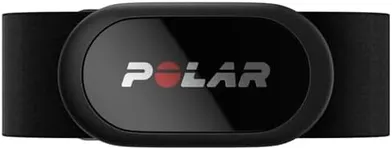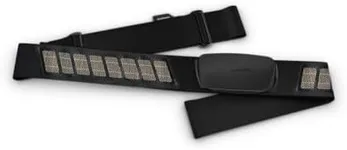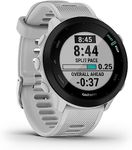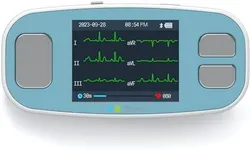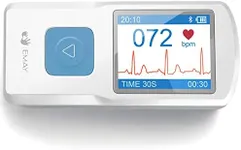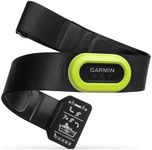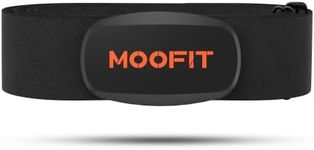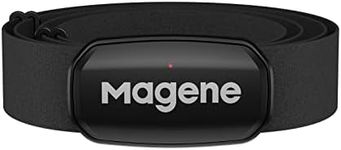Buying Guide for the Best Garmin Heart Monitors
Choosing the right Garmin heart monitor can significantly enhance your fitness journey by providing accurate heart rate data, which is crucial for tracking your workouts and overall health. To make an informed decision, it's important to understand the key specifications and how they align with your personal fitness goals and lifestyle. Here are the main specs to consider when selecting a Garmin heart monitor.Heart Rate Monitoring TechnologyThis spec refers to the method the device uses to measure your heart rate. Garmin heart monitors typically use either optical sensors (wrist-based) or chest straps. Optical sensors are convenient and comfortable for everyday use, while chest straps are generally more accurate and preferred for high-intensity workouts. If you need precise data for serious training, a chest strap might be the better choice. For casual fitness tracking, a wrist-based monitor should suffice.
Battery LifeBattery life indicates how long the device can operate before needing a recharge. This is important because it affects how often you'll need to charge the device, which can be a hassle if it runs out of power frequently. Battery life can range from a few days to several weeks. If you plan to use the monitor for long periods without access to a charger, look for models with extended battery life. For regular daily use with easy access to charging, shorter battery life may be acceptable.
Water ResistanceWater resistance measures how well the device can withstand exposure to water. This is crucial if you plan to use the heart monitor while swimming or in wet conditions. Water resistance is usually rated in meters, indicating the depth it can handle. For swimming, look for a device with at least 50 meters of water resistance. For general fitness activities where you might sweat or get caught in the rain, a lower rating might be sufficient.
ConnectivityConnectivity refers to how the heart monitor communicates with other devices, such as smartphones, fitness apps, or other fitness equipment. Common connectivity options include Bluetooth and ANT+. This is important for syncing your data and integrating with other fitness tools. If you use multiple devices or apps, ensure the heart monitor supports the necessary connectivity options. For basic use, Bluetooth connectivity is usually enough.
Data Tracking and AnalysisThis spec covers the types of data the heart monitor can track and how it presents this information. Advanced models offer detailed metrics like VO2 max, recovery time, and stress levels, along with basic heart rate data. This is important for understanding your fitness progress and making informed decisions about your training. If you're a serious athlete or data enthusiast, look for models with comprehensive tracking and analysis features. For casual users, basic heart rate monitoring and simple data presentation might be sufficient.
Comfort and FitComfort and fit refer to how the device feels when worn. This is crucial because an uncomfortable device can be distracting and may discourage regular use. Heart monitors come in various forms, including wristbands and chest straps. Try to choose a model that feels comfortable during your typical activities. For all-day wear, a lightweight and adjustable wristband might be best. For intense workouts, a secure and snug chest strap could be more appropriate.

